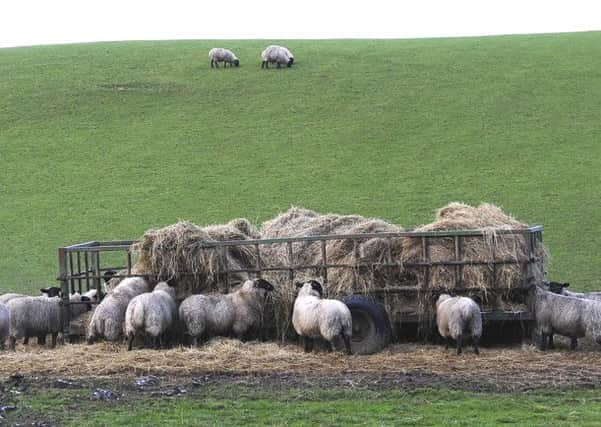New sheep vets group advice on ewe pregnancy


The new Borders Sheep Group of vets across the region, formed to pool knowledge and give better assistance, issued their first newsletter this month, headlining with nutrition for ewes.
They say targeting appropriate feeding in the last six weeks of pregnancy, when 75 percent of foetal growth takes place, “can have a significant effect on lamb birth weight, colostrum production, twin-lamb disease etc.”
Advertisement
Hide AdAdvertisement
Hide AdThe team say: “Feed adjustments such as increasing energy for ewes carrying multiple lambs or reducing feed in those with single lambs can result in more economic feed use, should optimise lamb birth weight and viability and will also help to prevent twin-lamb and other metabolic diseases of pregnancy.”
Protein feed levels in late pregnancy have a known effect on milk production, colostrum quality and mastitis incidence, they say, which in turn has a direct effect on lamb health and growth rate.
The experts say: “You need to know what you’re feeding them thus silage analysis (and analysis of the other components of the diet) is vital.
Scanning means farmers can feed according to the number of lambs the ewe is carrying. And body condition scoring is a simple method of monitoring the long term adequacy of the diet and is free.
Advertisement
Hide AdAdvertisement
Hide AdThey added: “Blood testing in late pregnancy can show if ewes are receiving enough energy and protein. For example levels of RDP (rumen degradable protein) in housed ewes in particular can be an early wake-up call to concerns and altered before lambing begins and problems occur. Copper and magnesium levels are usually checked as well.”
They suggest taking blood samples three to four weeks before the start of lambing. Results usually take 48 hours and farmers can make the necessary dietary changes before disease sets in.
Farmers can contact their vets to discuss cost and arrange blood tests.
Meanwhile poor scanning results can have several causes they say, adding: “Analysis of the keel mark data is very useful and allows us to determine what proportion of the flock were displaying oestrus behaviour during the first 17 days of the mating period, how many were not mated at the end and what proportion were marked twice. Selenium and iodine deficiencies result in pregnancy failure at the stage of implantation. Toxoplasmosis and Border disease are associated with early foetal death and abortion. These diseases are characterised by a high proportion of barren ewes being only marked once. A high proportion of ewes marked twice are often associated with unsound rams.
Advertisement
Hide AdAdvertisement
Hide Ad“While many causes of poor scanning results are tackled through changes in tupping and pre-tupping management, infectious diseases which lead to high barren rates (toxoplasmosis and border disease) can go on to cause abortions as pregnancy continues so prompt investigation can prevent further losses.” And they suggest farmers discuss their scanning results with their vet.